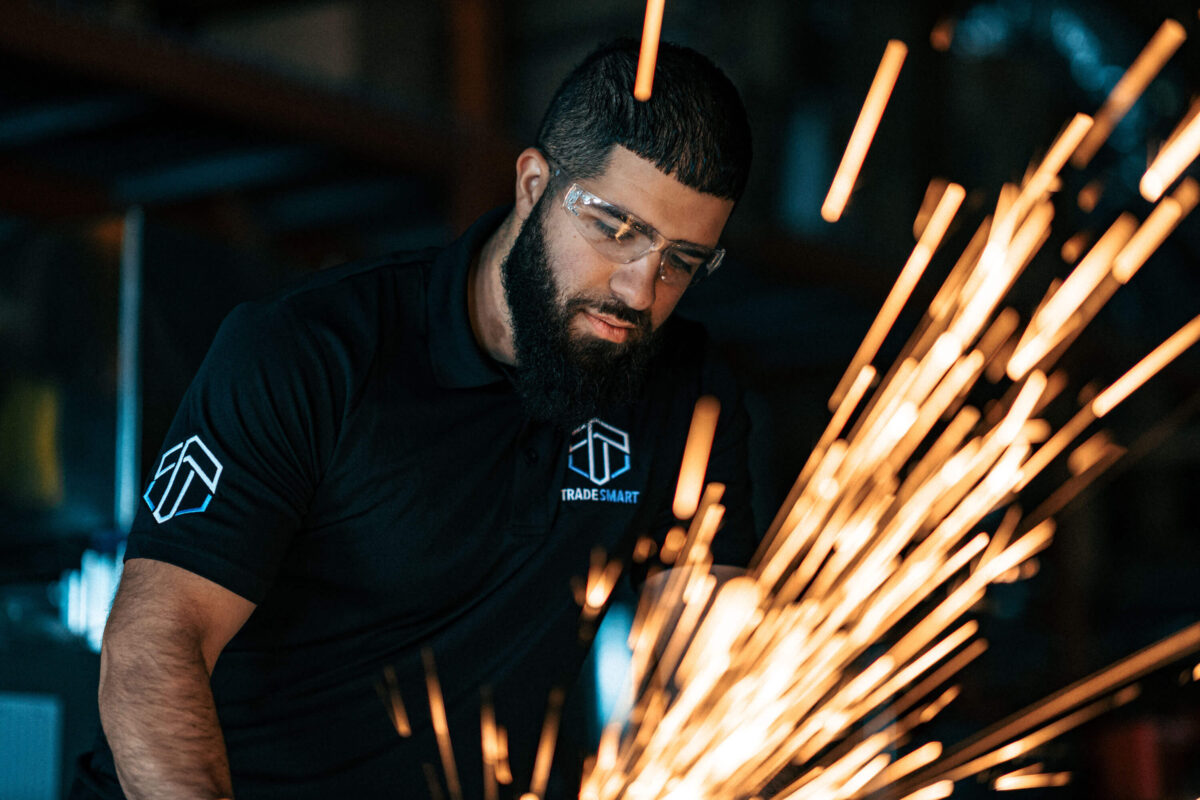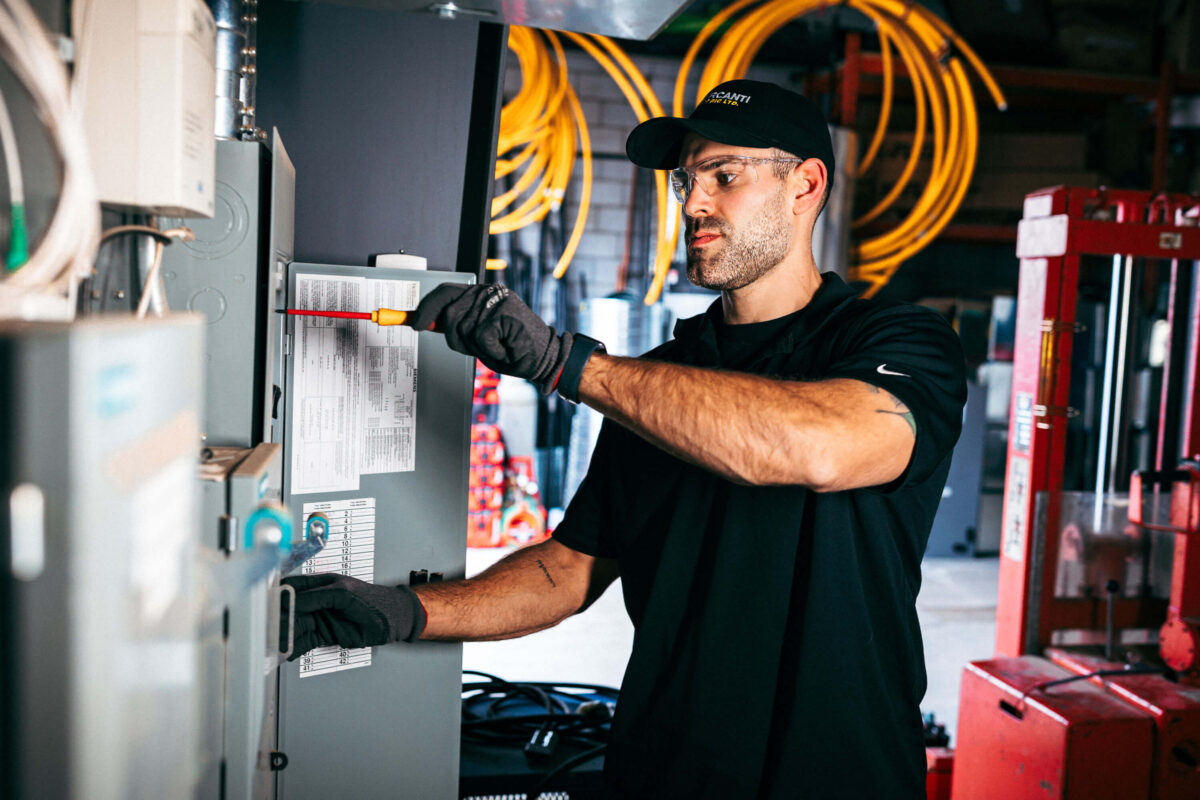How to Choose the Right Skilled Trade for You
tradesmart23
on
March 23, 2025
How to Choose the Right Skilled Trade for You

If you’re exploring skilled trades in Hamilton, Ontario, you’ve probably spent hours on Google researching “pre-apprenticeship programs Ontario,” “trade schools in Ontario,” or “how to become an apprentice in Ontario.” Choosing the right trade often feels like a high-stakes decision. Many aspiring tradespeople settle on a specific trade based on superficial criteria—such as salary rankings, perceived job ease, or family recommendations. At Trade Smart College, we’ve observed this phenomenon repeatedly, and while passion for a trade is admirable, rigidly sticking to a predetermined trade pathway, or what we call “The Blueprint,” can actually limit your career prospects.
Why Your Choice of Trade May Be Too Limited
One of the primary pitfalls of choosing a skilled trade is basing the decision purely on wage statistics. Lists highlighting “Ontario’s highest-paying trades” can be misleading. These attractive wages often apply exclusively to seasoned journeypeople still actively using tools. But careers evolve—many skilled trades workers shift into management, sales, or entrepreneurship. Consequently, those initially appealing average wages become less relevant as your career progresses, leaving you questioning if you chose the right path.
Moreover, initial motivations don’t always translate to sustained career satisfaction. We’ve seen many students pick a trade based solely on surface-level interests. We’ve had some students choose plumbing because they like the look of sleek bathrooms while others chose electrical because they liked fancy lighting systems. Passion is great—but it is not a reason to select one trade over another, and it needs to be backed by broader awareness and openness to unexpected opportunities.
The Myth of “The Blueprint”
Prospective trades students and their parents often meticulously design detailed career pathways. This “Blueprint”—can inadvertently create a rigid structure with unrealistic expectations. The Blueprint specifies that they have to find a pre-apprenticeship program; then get hired by a specific kind of trades company; then get signed right away as an apprentice, not a general labourer; they can only do certain kinds of work that help them learn their trade and they should not be subjected to menial duties like clean-up and inventory, and on and on. If one stepping stone along the pathway doesn’t happen, all is lost.
Many students envision this kind of quick, linear career progression. Yet reality often looks very different: most tradespeople start by sweeping floors, handling inventory, or performing general labour duties. Embracing these early experiences can actually enrich your understanding and enhance your value to future employers.
The trades are full of endless opportunities and taking advantage of them is the best thing you can do if you want a great career. This becomes impossible when one is stuck on The Blueprint, because those opportunities look like distractions or dead ends. The great opportunities in the trades are found off The Blueprint, not on it.
Overlapping Skills Across Trades
Another often overlooked reality is that skilled trades within the same sector—such as plumbing, HVAC, electrical work, and carpentry—share substantial overlap. Staging –- planning, ordering, receiving, moving, storing, and shifting supplies and equipment, and cleaning up after a job is done– is 75 to 80% of most trades work. Ordering, receiving, and moving a box that contains an A/C unit instead of a toilet is exactly the same work, as is cleaning up afterwards. So is it really a good idea to insist on following a rigid plan to get you into your special trade when most of what you do on a daily basis is indistinguishable from a bunch of other trades?
Recognizing this overlap is critical. Being too fixated on one specific trade may unnecessarily limit your ability to recognize broader opportunities. The best tradespeople are versatile, recognizing that their skills are transferable across multiple trades. Therefore, flexibility in your initial career goals can significantly enhance your employability and long-term career satisfaction. Sticking to The Blueprint is a recipe for disappointment, even disaster.
Embracing Opportunity Over Rigidity
You are far better off discarding The Blueprint if you have one, and thinking instead about opportunities. What opportunities are available to me right now, and which ones look like they could give me an opportunity to learn new things? Some of the employers who take our students on internships tell them straight up that an equal, if not better route to becoming a tradesperson is to spend a year working at a parts supply store. You get to learn about every part and tool in that trade, you get to see busy times and slow times, which companies have lots of work and which ones don’t.
In addition, if you’re prepared, focused and reliable, you get to prepare orders for 10-20 tradespeople every day, on time and without any mistakes. What better way to show 20 potential employers that you are dedicated, provide great customer service and are keenly interested in the trade? You couldn’t ask for a better job interview. Don’t expect an employment offer in a month or two, but providing a year of excellent customer service to potential future employers will open up opportunities you don’t even know about.
Key Points to Remember:
- Choosing a trade solely based on salary or superficial interests can lead to dissatisfaction.
- Rigid career paths (“The Blueprint”) rarely align well with reality.
- Trades within the same sector share extensive common tasks and skills, so think in terms of opportunities, not one specific trade or another.
- Flexibility and openness to opportunities are crucial for long-term success.
- Alternative paths, such as working in related industry positions, can provide exceptional career benefits.
The Bottom Line
Flexibility Beats Rigidity in Choosing a Skilled Trade
Rigidly adhering to a preconceived career pathway can severely limit your potential in the skilled trades. Flexibility, openness, and readiness to seize unexpected opportunities often define the most successful and satisfied tradespeople. At Trade Smart College, we encourage our students to embrace opportunities through our signature Trades Match program which combines opportunities, real-world experience, and paid internships designed specifically to broaden horizons and enhance employability—far beyond traditional expectations.

We Need More People in the Skilled Trades
We Need More People in the Skilled Trades For decades, we’ve been hearing about the shortage of people entering the skilled trades, and it seems like the problem is getting worse, not better.

Your Chances of Getting an Apprenticeship in Ontario: By the Numbers
Your Chances of Getting an Apprenticeship: By the Numbers By any measure, Ontario is desperately short of skilled tradespeople. We need people now, but the first step in becoming a tradesperson is to

What’s the Highest Paying Trade in Ontario in 2024?
What’s the Highest Paying Trade in Ontario in 2024? Many of our prospective students ask some version of the question, “what is the highest paying trade in Ontario?” We understand the impulse behind

Your Meeting
Your Terms
Need more info? Looking to register? Want to find out about financing or start dates? Book a call, meeting, or text chat with Carrie our Student Success Manager.
Contact the Team
Campus Hours
- Mon- Fri: 7am- 5pm
- Open House - See Schedule














